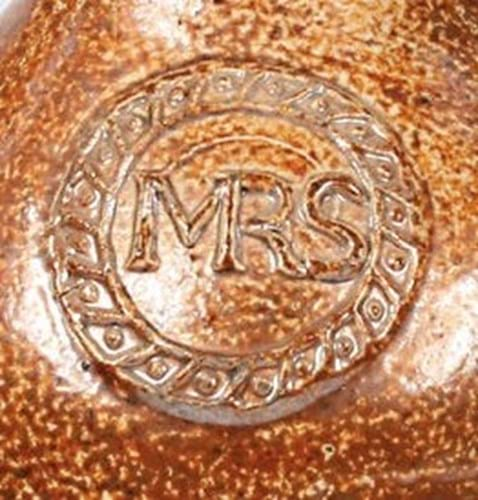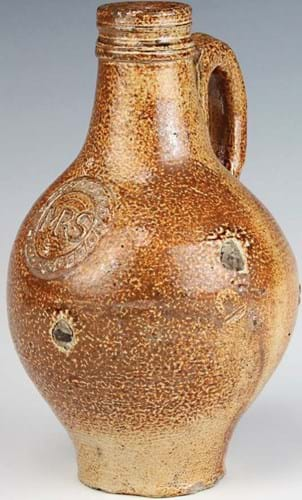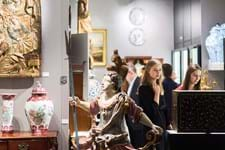Although catalogued as German, they were identified by a number of knowledgeable bidders and competed to five-figure sums at Denhams in Horsham on March 9.
Most surviving 17th century brown salt glaze vessels were made in the Rhineland, typically in Frechen, close to Cologne.
Bellarmine or Bartmann jugs were supplied across Europe in their millions.
However, the similar stonewares made on the outskirts of Stuart London are an altogether rarer breed.
While immigrant Dutch or German potters were probably making pots much earlier in the century, John Dwight (c.1633-1703), the son of Gloucestershire farmers, is the first clearly documented maker of stoneware in England. He was almost certainly the first Englishman to make salt glazed stoneware – beginning a long tradition that spread to potteries in Lambeth, Nottingham, Bristol and Staffordshire.
Supported by two greats of Enlightenment science he met while a student at Oxford, Robert Boyle and Robert Hooke, Dwight was granted a 14-year patent in 1672 for ‘the mistery of transparent earthenware, commonly known by the names of porcelain or china, and of stoneware, vulgarly called Cologne ware’.
Although also remembered for more ambitious sculptural pieces, ale house mugs and bottles were probably the stock in trade of Dwight’s enterprise (large quantities of sherds were found when the factory site at the junction of New King’s Road and Burlington Road was excavated in the 1970s). On March 23, 1676 he signed an agreement with the Glass-Sellers’ Company to supply ‘fine Brown Bottles Juggs and all other sorts of Fine Browne stone wares’ to its members.
In much the same way as glass bottles of the period bore ownership seals, many were personalised with initials, names, dates and symbols that gave otherwise utilitarian forms a real sense of place.
Tavern bottles
Over 100 different medallions are known on Fulham Pottery bottles from the 1670s, mostly giving the tavern and tavern keepers’ names.
The most numerous survivors are bottles with the sign of The Cock tavern in Temple Bar (a favourite haunt of Samuel Pepys) and the name of either the landlord Henry Crosse or his deputy William Morrison. One of these sold for £16,000 at Bonhams in September 2006.

A detail showing the applied medallion with the initials MRS.
The two vessels offered for sale at Denhams – the same form and size at 8in (20cm) each – carried wreathed medallions with the initials MRS. They were both in good condition with some minor chips to the bases and indents to the body.
Estimated at £400-600 each (perhaps about right for German bottles), the one with the most defined medallion was competed to £19,000, the following lot to £15,000. A 20% buyer’s premium was charged.
















